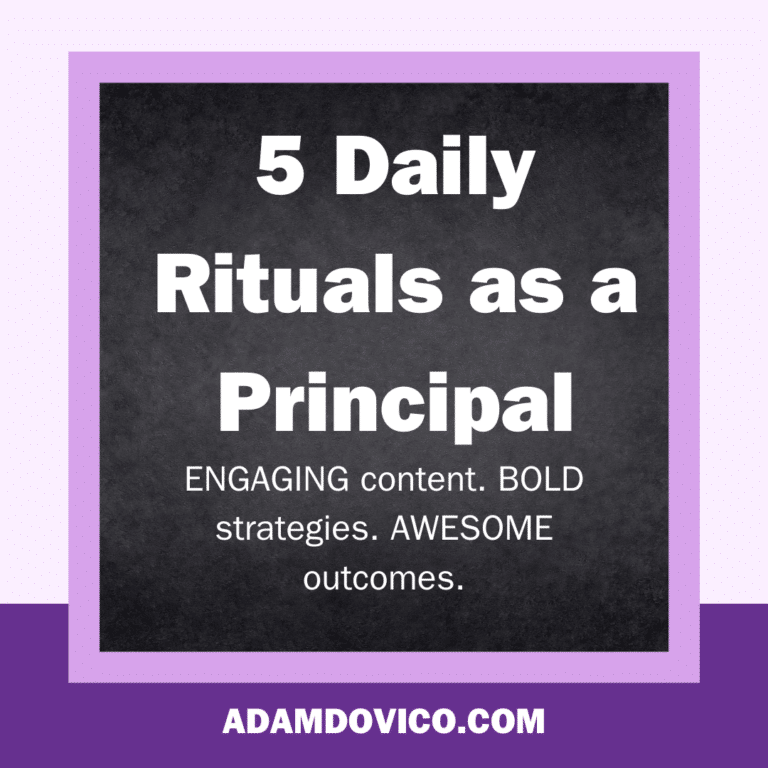Year One: Inside the Trenches
It has been one year since I began this unique and eye-opening role as the School Implementation Specialist for The Ron Clark Academy. I frequently get asked by co-workers, teachers, and friends, “What do you see?” This post is dedicated to explaining that answer.
Before I begin though, I want to say how fortunate I am once again to be able to combine two things I love: travel and education. In the past year, I have been to sixteen states, about thirty-five schools; observed, trained, and worked with over 1,500 teachers; and modeled lessons for nearly 500 students. I’ve been to schools with 2,000 students and to towns of 700 residents. There’s been a good deal of Wendy’s dinners, rental cars, and Holiday Inns. In the end, I know I have become a better educator and professional because of it.
1) My first finding, and perhaps the most significantly vital, is what makes a school successful based on my experience. While there are any number of plausible opinions and research statistics that could answer this, my humble opinion finds its way to one location: the administration. It is the effectiveness of the school administration that makes or breaks a school. While there are certainly individual teachers who can shine in an ineffectively run school or dud teachers in an excellently run school, I have yet to find an entire school that operates successfully and happily with leaders who are not effective.
That, of course, leads one to ask, “What does an effective leader look like?” Glad you asked. Let me explain. Meet Mike Roberts, a principal in western Georgia who demonstrates what it means to be an effective leader on a daily basis. Mike is a middle school principal who sees his role of a supporter of the teachers. He realizes it is the teacher who is in front of those children each day, and when he sees a teacher with great ideas or doing things that are best for the children, he supports them verbally, financially, publicly, or whatever the need. When he sees a teacher who is struggling, he finds a way to help them. He leads by example; he is at the forefront of any change that goes on at the school and is willing to put himself on the line if it means that it will benefit the kids. Many administrators will say that is their intention or even what they do, but I have found it is those who demonstrate it day in and day out who earn the respect of the staff, students, parents, and community. I have met many administrators like Mike, and it makes my job so much easier when I walk into those schools because I know that change can happen.
When I go to schools, I try to get a picture of what is going on there, and it typically only takes a couple of conversations with teachers and staff to get a fairly clear and consistent picture of how the school is operated. When I have three to five teachers in a row tell me how supportive their principal is and how they would follow her wherever she went, that says a lot. When I have a handful of teachers tell me that they are being micromanaged and they have nothing good to say about the administration, well … you get the picture.
In summary, the administration is the number one factor I consider important to a school. I also might add that just because a school has good test scores or is considered “good” by a website does not mean is it being operated well. And the reverse is true as well; some of the most well run schools I have seen are in the toughest of neighborhoods, do not have the best test scores, or are not the prettiest, but there is damn good leadership running the daily operations and the staff is proud to be there.
2) Engaging teachers are liked more than boring teachers. Novel concept, right? I wish I could come up with a fancier way to describe this or something more poetic to say, but the simple fact is that kids want to be engaged in their learning. Few students I have observed are engaged by a teacher reading out of a teacher’s manual, being assigned to copy words out of a book, lectured to consistently, or taught by a teacher sitting behind a desk. Sadly, I have observed all of those during my travels. More often than not, these are actions I observe as principals walk me around their school or as I travel from class to class. My eyes are always in the windows of classrooms I am not observing because those teachers do not know they are being watched. That’s when your true colors come out! Shockingly, I have had several observations when those teaching methods are being used right in front of me!
I cannot do anything but laugh at times when I walk into a classroom and the teacher suddenly springs out of her chair like a rocket launching or the teacher excitedly gives the command to “put away your worksheet kids so we can get to our activity today.” On the flip side, it is refreshing when I walk into a classroom and the teachers and students literally do not even realize I am there. The class is so engaged and focused that a fire alarm might go unnoticed if it were to go off.
If you are ever wondering if a classroom is being engaged, look at their faces. Kids have trouble faking their interest. If they look like they are sleeping, they are likely bored – go figure. If they are smiling, there is likely something engaging going on. If their eyes are glued to the teacher like a cat following a laser pointer, something great is happening. I like when I see smiles, cats, and laser pointers in classrooms.
3) I see frustration. A lot of it. Frustration over mandates; frustration over paperwork; frustration over testing; frustration over parents, co-workers, administration, students, health benefits, retirement, supplies, textbooks, Common Core, technology availability, etc. etc.
The thing is, I feel for them. I shared so many of those frustrations while I was in the classroom as well. I have learned to just listen. That’s it. People want to vent, and as someone who is brought in to “help”, I have realized that’s part of the job – listen.
Teaching is a tough job, and I can only sympathize with so many of their situations as they explain them to me. In the end, I cannot do much to help them with their individual frustrations, but I do offer what got me through most of the most frustrating days I have had – the kids. As I walked into my classroom after having receiving a nasty email or getting into an argument with someone, you have to let it go for that time when you’re with the kids. They do not deserve being the recipients of your issues, and we have to give the kids our undivided attention when we’re with them.
I have observed teachers after talking to them about their personal issues and am blown away at how they come in with the greatest smiles across their faces knowing that they are dealing with some frustrating things inside. One first teacher I met in the fall was going through a nasty divorce as she told me (I also get to play Dr. Phil on some occasions), but when I watched her teach, you would have thought she was living the perfect life. I felt for her because I knew she was struggling, but I was also proud of her for not letting it affect those kids.
4) I was pleasantly surprised and pleased with the amount of technology I saw being used. There is a perception that schools have all this technology and it just collects dust and is used as an extra bulletin board. I can assuredly say that teachers are using their technology. Smartboards, Promethean boards, document cameras, iPads, laptops, etc. are in use in many classrooms. The uses, of course, vary by comfort level and training, but rarely did I see a board in a classroom not being used when it could have been or a laptop cart just collecting dust.
In talking with teachers, they are excited and eager to receive more training on the bells and whistles that their interactive boards can offer, rather than just internet and notepads. Another surprise for me was that is was also the experienced (that’s my nice way of saying teachers who have been around for quite a while) who were eager to use the technology, not just the Generation X folks!
5) We have a diverse country. And I don’t just mean race and ethnicity. We often judge education and upbringing based on where we grew up and our own experience in school. I know I did. I based what I pictured education as from my growing up in a middle class, racially diverse town in NJ. My views expanded some when I began teaching in a rural NC town. It expanded some more when I began teaching in the inner-city of a NC city. But it took until this year to see what it was like living in a town of 700 people. Or what it is like living in extreme poverty. Or what it is like going to a sectarian school where religion plays a vital role in every decision. My views on education expand, deepen, and change with each location I visit. The beauty is that I know I am not done. I look forward to continuing this learning process. Unfortunately, I realize that I am one of a small group of people that have the opportunity to travel to schools across the country, but that is also why I feel it is important to share these findings and give a report on what it is like being “inside the trenches” in schools across America.
I have furthered cemented my opinion that we will never be able to find a one-cure solution for the issues in education because we are all coming into education from such divergent experiences. We must find ways to uncover appropriate and effective solutions for the situations in which we are, but solutions which ultimately prepare our students for 21st century careers and thinking.
Year one has been a success in my eyes. I have been witness to teachers implementing things immediately after a workshop or after a modeled lesson. I have received emails, pictures, and videos of educators trying new things in their classrooms. Honestly, it makes me happiest for those students when I see those responses because I know that they are getting a great experience in school.





Great post, Adam! Such truths and I am glad you are making a difference in education across the country! Hope your second year is even more successful than the first!